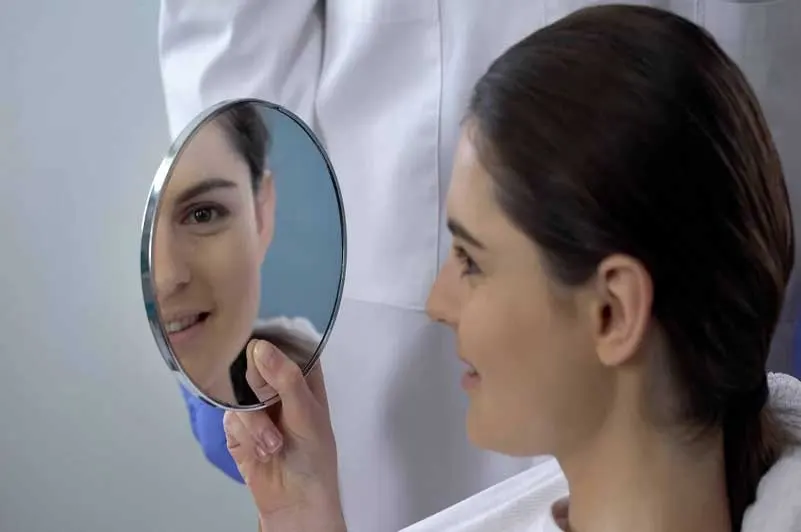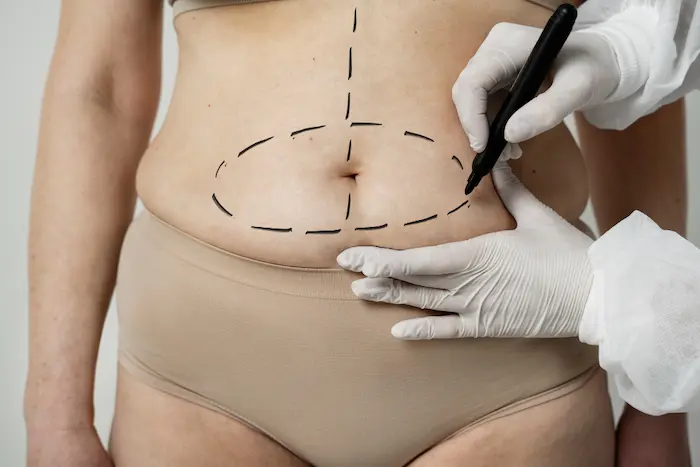
The Reality of Revision Rhinoplasty: Expectations vs. Results
It would be ideal if all Rhinoplasty patients were satisfied with their results. But this is just an imaginary scenario,...
It would be ideal if all Rhinoplasty patients were satisfied with their results. But this is just an imaginary scenario, as no treatment can guarantee 100% results. An experienced surgeon can help to inflict near-perfect outcomes but you need to be ready to face any type of result. Having realistic expectations with the surgery hence becomes paramount.
No wonder, doctors often recommend patients to be content with the surgery outcomes. So, what are the options if your nose surgery turns up against your expectations? Perhaps a revision Rhinoplasty could be an option. After one surgery coming a cropper, you may feel jittery to undergo another one. However, if you can muster the courage to approach the best surgeon and have realistic expectations, this goal is attainable.
Revision Rhinoplasty - Brief Intro
A revision procedure is available to patients who are unhappy with the outcome of their nose operation. Before deciding to get a revision, you should consult your surgeon to know the possible after-effects and your suitability to opt for this corrective Rhinoplasty surgery.
But how does a revision Rhinoplasty often go? If you have already had nose surgery in the past and are unhappy with the results, you may want to consider revision Rhinoplasty, sometimes called secondary Rhinoplasty. Because the first procedure alters the nasal anatomy and leaves scar tissue, revision Rhinoplasty is frequently more involved than primary nose surgery.
It is a thinkable alternative when the result of the first procedure falls short of the patient's expectations. At times, any severe complication may also necessitate the need for corrective surgery. For example, if the first operation fails to fix a deviated septum, a revision procedure can make up for the problem, enabling the patient to breathe with ease.
Disclaimer: According to the American Society of Plastic Surgeons (ASPS), no ethical plastic surgeon can claim the success of revision Rhinoplasty. The same holds true for almost any other revision surgical procedure.
What do the stats opine about Revision Rhinoplasty?
A survey titled Cosmetic Rhinoplasty: Revision Rates Revisited conducted by Oxford Academic and published in Aesthetic Surgery Journal, tried to find the results of Rhinoplasty. This also included the revision rate.
The table below summarizes the findings of the survey:
| Parameter | Value |
| Total Rhinoplasty surgeries performed | 369 |
| Rhinoplasty surgeries with an open approach | 279 (72.7%) |
| Overall complication rate 7.90% | 7.90% |
| Overall dissatisfaction rate | 15.40% |
| Overall revision rate | 9.80% |
| Successful anatomical correction | 87% |
| Factors associated with revision and dissatisfaction | History of previous nasal operation or facial fracture, lack of anatomical correction, postoperative complications (P < .05) |
| Factor associated with higher dissatisfaction | Failure to address nasal tip at primary Rhinoplasty |
As you can infer, the overall revision rate is 9.8%, which comes out to be around 36 patients. Though less, around 10% revision rate is still considerable.
Common Reasons for Seeking a Revision
Opting for a revision surgery is not usual considering the invasive methods used during the procedure. If the patients still want to for a revision nose surgery, it may be due to the following reasons:
- Unhappiness with the final result
- Nasal blockage
- The emergence of new aesthetic issues after the initial procedure
Make sure not to contemplate a revision until your nose completely recovers after the initial surgery, which usually takes around a year. The final form and function of your nose may change during this time.
You must thoroughly understand revision Rhinoplasty to make educated judgments regarding a secondary procedure and have reasonable expectations for the outcome. Surgeons use this time to determine if their patient's goals are attainable, given their specific nasal anatomy.
Setting Realistic Expectations
Pre-operative consultations are essential to set reasonable expectations. During a face-to-face discussion, the surgeon will assess your nasal anatomy, go over possible results, and inform you about the limitations of revision Rhinoplasty.
While the surgeon expertly evaluates the potential benefits and drawbacks, you can express your concerns and wishes. It would be better to set realistic expectations rather than dampening hope to promote mutual understanding between the patient and the surgeon.
The important thing is to be aware of the path you are about to go on and be ready to face any type of outcome. Being prepared for the result will ensure that patients are happy with the results. It will also lessen their emotional fallout if they do not find the result exactly as per their expectations.
What to Anticipate after a Revision Rhinoplasty?
Indeed, you are already aware of the surgery, as you have undergone it once. But your surgeon might provide some additional information that may prove valuable for the revision Rhinoplasty surgery. Here are some crucial points to know about the entire corrective Rhinoplasty surgery.
1. Things to consider before a Revision Rhinoplasty
Careful planning is the first step on your roadway to a revision surgery for the nose. Medical exams, imaging studies, and patient education regarding expected outcomes are all part of the preoperative process that patients must fully grasp. Practical preparations, such as scheduling time off work, obtaining post-operative care, and establishing support systems, are equally essential.
2. What to Expect on the Operating Room Day
The revision process, which might range in complexity depending on the patient's unique situation, will take place during the surgery day. The surgeon will make structural changes to the nose to improve its look and functionality while fixing any problems that arose during the prior procedure. Undergoing the procedure under general anesthesia usually takes a few hours.
3. Immediate Post-Surgery: The Healing and Recovery Phase
During the recovery period after undergoing revision surgery, patients could feel pain, bruising, and edema. To ensure a speedy recovery, it is essential to adhere to the surgeon's postoperative care instructions, which may include specific drugs, time spent resting, and avoidance of certain activities.
4. Maintenance and Care for the Long Term
It can take up to a year for the full effects of revision Rhinoplasty to become apparent. Consistent follow-up visits allow doctors to assess the current condition of the patients and answer any questions or concerns they may have. To ensure the results remain consistent, long-term maintenance would include avoiding harm to the nose and maintaining a healthy lifestyle.
A revision Rhinoplasty procedure is a long-term commitment that calls for persistence and careful following of post-operative instructions. The patient and surgeon work together in a coordinated effort to overcome the challenges of secondary nasal surgery and get the most significant potential result.
Outcomes and Satisfaction of Revision Rhinoplasty
After a revision surgery, it is obvious for the patients to have the first glimpse of their nose, as the outcome may go either way. Here are a few pointers to deal with the revision surgery results.
1. Assessing the Outcome of a Second Rhinoplasty
The cosmetic results and the improvement in nasal function are the indicators of successful revision Rhinoplasty. Patients should consult their surgeons to establish reasonable expectations of the procedure's results. The final nose shape will settle over time, usually up to a year after surgery. Thus, evaluating success is a long process.
2. Testimonials from Patients: Anticipation vs. Actuality
How does revision Rhinoplasty often go? The surgical outcome and its psychological and physiological effects are two sides of the complex coin: patient satisfaction.
For a better understanding of what it is like to undergo revision Rhinoplasty, reading testimonials, and case studies can be helpful.
These accounts provide a holistic patient satisfaction perspective by illuminating the degree to which postoperative realities correspond with or differ from preoperative expectations.
3. The Importance of Routine Checkups
When it comes to patient satisfaction, continuous follow-up care is crucial. By checking in with the patient regularly, the surgeon can address any issues and ensure the recovery is going according to plan. Patients greatly benefit from this continuous care as they adjust to the changes in their look and function.
Final Words
Every operation would have a positive result in a perfect world. That is not necessarily the case, though, and many reasons exist for the same.
As per a study, around 10% of the patients undergoing Rhinoplasty opt for revision surgery. This is possible due to dissatisfaction with the first-hand surgery, postoperative complications, nasal fractures, and other reasons. Therefore, patients willing to opt for a revision surgery must be sure about their decision, as they have already faced so much hassle.
No plastic surgeon can claim to deliver successful results from a revision surgery. Still, singling out a duly qualified, experienced, and consummate surgeon for the revision surgery would always be preferable. In any case, the surgeons recommend the patients to be realistic about their expectations, be it an initial nose surgery or a revision Rhinoplasty.






Comments
Login & Write comment